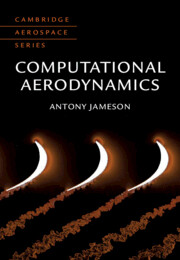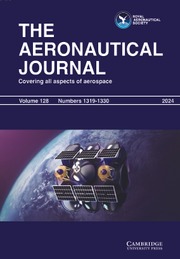Computational Aerodynamics
Computational aerodynamics is a relatively new field in engineering that investigates aircraft flow fields via the simulation of fluid motion and sophisticated numerical algorithms. This book provides an excellent reference to the subject for a wide audience, from graduate students to experienced researchers and professionals in the aerospace engineering field. Opening with the essential elements of computational aerodynamics, the relevant mathematical methods of fluid flow and numerical methods for partial differential equations are presented. Stability theory and shock capturing schemes, and vicious flow and time integration methods are then comprehensively outlined. The final chapters treat more advanced material, including energy stability for nonlinear problems, and higher order methods for unstructured and structured meshes. Presenting over 150 illustrations, including representative calculations on unstructured meshes in color. This book is a rich source of information that will be of interest and importance in this pioneering field.
- Most comprehensive theoretical book on computational aerodynamics, appropriate for a wide audience including all graduate-level courses
- Over 150 illustrations, including representative calculations on unstructured meshes in color for clear understanding
- Written by a leading expert, an eminent scholar in the field with an outstanding reputation
Reviews & endorsements
'This is a clear, detailed, and thorough treatment of a complex subject. Professor Jameson masterfully weaves together the ingredients needed for the simulation of aerodynamic flows, starting from a mathematical understanding of the model equations and presenting the numerical methods with detail and rigor. It is a deeply enjoyable book that will be valuable to those in the Computational Aerodynamics community as well as many other computational scientists.' Sigal Gottlieb, University of Massachusetts Dartmouth
'Professor Jameson's text is accessible, timely, well structured, and complete. Initially, it runs through historical methods and finishes with modern state-of-the-art Computational Aerodynamics approaches. The latter includes high-order methods, which are especially timely. This excellent book is a must-have for anyone who wants a classical grounding in modern Computational Aerodynamics. It is suitable for both those based in academia and industry. I could not recommend a book more highly.' Paul Tucker, University of Cambridge
'Antony Jameson has created a classic on Computational Aerodynamics that encapsulates his pioneering contributions to the development and application of methods for simulating aerodynamic flows using computers. By sharing his vast knowledge of the foundational elements of today's computational aerodynamics in this one volume, Professor Jameson has made a lasting contribution to aerospace literature. Students, as well as researchers and experienced practitioners engaged in this particular discipline, must have a copy of this masterpiece book in their library.' Pradeep Raj, Aerospace and Ocean Engineering Virginia Tech
'This book is a goldmine for CFD researchers and developers. For over five decades, the author has been the nexus of CFD development. While the schemes and tricks he invented made their way into virtually all academic, government, and commercial CFD software, Professor Jameson has constantly been incorporating methods developed in the community into his series of CFD codes, often making significant improvements. This book contains a collection of the most valuable techniques and ideas that have enabled modern CFD. It is helpful to anyone who wants to understand and improve state- of-the-art Computational Aerodynamics approaches.' Qiqi Wang, Massachusetts Institute of Technology
'This is a scholarly book, one that is expected from one of the most distinguished luminaries in the field. The book covers almost every topic in CFD for flows that can be modeled as an ideal gas. Its strength is in addressing the tough issues on the accuracy and efficiency of CFD methods in predicting steady and unsteady subsonic and supersonic flows in aerodynamics and in providing the thinking processes that led to the development and evolution of those methods.' Tom Shih, Purdue University
'the text could be used for a graduate course in computational fluid dynamics (CFD) and by researchers who need to develop this field further. CFD professionals and graduate students will especially value this work … Recommended.' A. M. Strauss, Choice
'… this modern treatise represents a lifetime's work of sustained effort. The renowned author is the foremost exponent of computational fluid dynamics (CFD). He has taught the subject and has been developing software for several decades … Overall, through his truly amazing content, Prof Jameson has recorded his subject for all to understand, and to use, develop and improve CFD. As a reviewer, I learnt a lot. I have pleasure in recommending this book.' R. K. Nangia, Aerospace
Product details
August 2022Adobe eBook Reader
9781108950282
0 pages
This ISBN is for an eBook version which is distributed on our behalf by a third party.
Table of Contents
- Preface
- Acknowledgements
- 1. Introduction and background
- 2. Mathematical models of fluid flow
- 3. Numerical methods for the solution of partial differential equations
- 4. Fundamental Stability Theory
- 5. Shock capturing schemes I
- 6. Shock capturing schemes II
- 7. Discretization schemes for flows in complex domains
- 8. The calculation of viscous flow
- 9. Overview of time integration methods
- 10. Steady state problems
- 11. Time accurate methods for unsteady flow
- 12. Energy stability for nonlinear problems
- 13. High-order methods for structured meshes
- 14. High-order methods for unstructured meshes
- 15. Aerodynamic shape optimization
- Appendix A
- Appendix B
- Appendix C
- Appendix D
- Appendix E
- Appendix F
- References
- Index.



